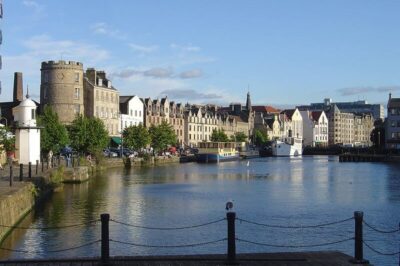Discover the history of Leith, once an independent burgh, first mentioned in Holyrood Abbey’s foundation charter granted by King David I in 1128.
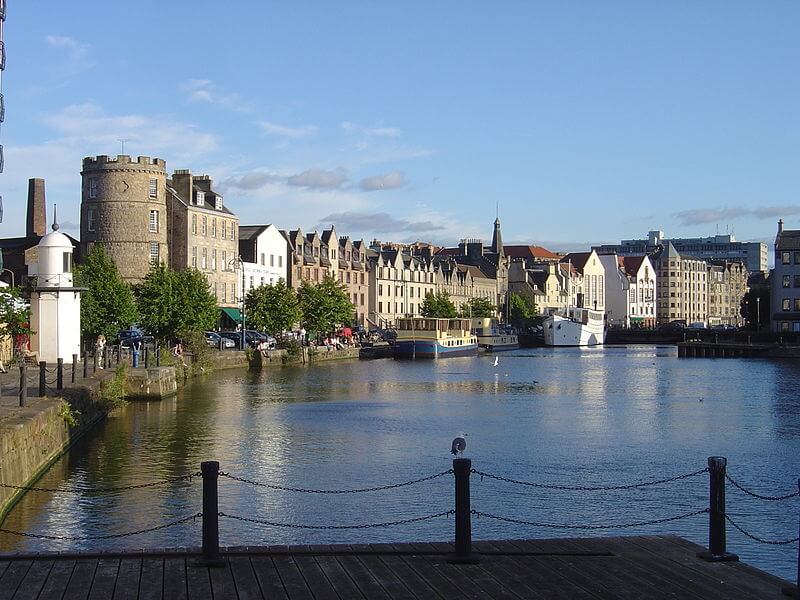
The Shore, Leith
Although Leith, the Port of Edinburgh, is now an integral part of the Scottish capital, many Leithers still strive to retain their independent spirit, fully aware of their significant place in history.
While some of the less salubrious parts of town, several made famous in the cult movie ‘Trainspotting’ still remain, there’s a change in the air, and a fresh vibrant feeling now pervades the area.
Royal Yacht Britannia berthed in Leith
The berthing of the decommissioned Royal Yacht Britannia in Leith, although built in Glasgow, was a real indication of the faith in the area.
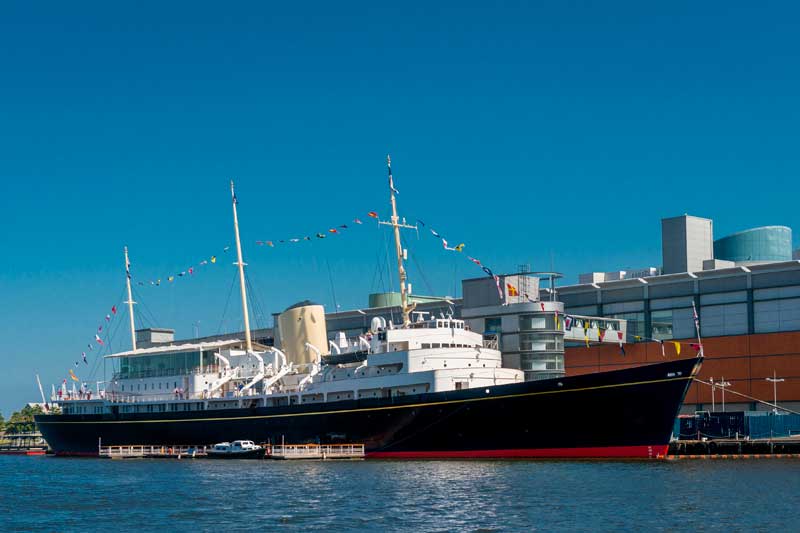
The Britannia, which now has its own special place in Leith history, has become one of Scotland’s best-loved tourist attractions and provides a reminder of the importance that the port has played in the history of Scotland.
The Port of Leith is of course still a working port, the largest deepwater port in Scotland.
As well as cargo handling, cruise liners and naval vessels are an increasingly common sight.
Historically Leith has also had a long association with the Scotch Whisky industry.
Over the years companies have built their whisky businesses from premisesinLeith. Bonded warehouses, for example, were once a familiar sight.
Today the new Port of Leith Distillery sited next door to the Britannia is the area’s most obvious connection with the distillation of whisky. The Bonnington Distillery is also located in Leith.
There are also examples of Gin being distilled in the area.
The history of Leith, the port of Edinburgh
Archaeological research has proved that there was a settlement on the banks of the Water of Leith in pre-history.
However, it wasn’t until 1128 when King David I granted land in Leith to Holyrood Abbey that the first records were created.
By the end of the 13th century, Berwick upon Tweed (now part of England) had developed as the main port of Scotland.
The export of wool despatched from the Border Abbeys to Bruges to be turned into cloth by Flemish weavers was particularly important.
However, its destruction by England’s king, Edward I in 1296, allowed Leith to take advantage of its misfortune and gradually develop to become the most important port in the country.
Wars of Independence
After the sack of Berwick, Edward’s army stayed in Scotland and the long Wars of Independence began.
Edward’s death in 1307 brought no change. His son Edward II kept his army of occupation in Scotland and consequently Leith harbour was busy handling supplies for the English garrisons that had taken up residence in Edinburgh and Stirling Castles.
It was not until after an English defeat at the Battle of Bannockburn in 1314, that Scotland was briefly free of foreign armies.
Throughout the years there are a number of notable dates in Leith’s history worthy of mention.
Among them is the story of Sir Andrew Wood, one of Scotland’s best-known sailors, originally a merchant from Leith.
He became an instant Scottish hero in 1483 when as commander of two ships he defeated a larger English force in the Firth of Forth.
Leith History: The Great Michael warship
He subsequently captained the Great Michael, built close to Leith at Newhaven. It was twice the size of Henry VIII’s ill-fated Mary Rose which, at the time, was the biggest warship in Europe.
Not to be outdone by the Scots, and in what has been described as a medieval arms race, Henry built the 165 feet long, 1000-ton English carrick the ‘Great Harry’ adding to his already formidable navy.
South Leith Parish Church
Another significant date in the Leith timeline was the founding of St Mary’s Church in the 15th century. It was later renamed South Leith Parish Church and is still flourishing today.
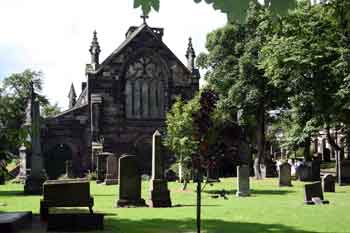
In 1547, the church was used to imprison Scottish nobles, when English soldiers again occupied Leith.
Over a century later parishioners made way for powder and guns when Oliver Cromwell came calling and used the church as a ‘magasin’.
Trinity House, Leith
Trinity House originally built in 1555, was the headquarters of the Incorporation of Masters and Mariners of Leith, which was founded in 1380 to provide relief to the poor, sick or aged sailors.
The present structure, now a Historic Environment Scotland property, is a “maritime treasure trove with a fascinating range of exhibits.”
Below the building are the 16th century rooms that once served as a school for aspiring sailors.
Leith History: Mary Queen of Scots
After the death of Scotland’s king, James V on 14 December 1542, his daughter, the week-old Mary Queen of Scots was promised in marriage to Edward, son of England’s Henry VIII.
The Scottish Parliament however was having none of it and declared the promise, made by Scotland’s Regent James Hamilton, the 2nd Earl of Arran, null and void.
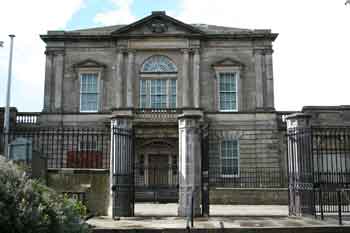
Henry who had renounced Catholicism, because of the Pope’s refusal to grant him a divorce from Catherine of Aragon felt threatened by his Catholic neighbours Scotland and France.
He was desperate to create an alliance through marriage with Scotland but France also had plans for a royal marriage with Mary.
What followed was one of the most violent periods in Scotland’s history, now known as the ‘Rough Wooing’.
In 1547, Henry VIII, furious at the decision not to allow the marriage of his son to the young Mary Queen of Scots, sent his army under the command of Edward Seymour the Earl of Hertford, to ‘persuade’ them to change their minds.
Seymour’s soldiers destroyed much of Leith before marching on Edinburgh to kill and burn there.
Safely ensconced behind the thick and protective walls of Stirling Castle, while English troops continued their destruction, was Mary of Guise, wife of the recently dead James V and mother to the infant Mary.
Mary who came from one of France’s most noble families urgently appealed to the French king Henry II for help. Henry was desperate not to let Scotland fall to the English but in return for his help he demanded that Mary should marry his own son.
James Hamilton, Scotland’s Regent also harboured thoughts of Mary marrying his own son.
He was eventually persuaded by the French that Mary should leave for France and wed Francis the young Dauphin when she was old enough.
It was 13 years before she returned to her native country.
Eventually, an agreement was reached that Mary should leave for France and wed Francis the young Dauphin when she was old enough. It was 13 years before she returned to her native country.
The French arrive in Leith
In June 1548, a French army arrived in Leith, and reinforced by 5,000 Scottish troops, work began to strengthen the town’s defences.
The English who had moved out of Leith were also busy building their own major fortifications at Haddington to the east of Edinburgh.
Reflecting the growing French influence in Scotland, Mary of Guise had in 1554 replaced the increasingly ineffectual Hamilton as Regent of Scotland.
By the end of 1559, Scotland was facing enormous change.
The Scottish Reformation, driven by John Knox, was sweeping away the now despised Catholic religion and not unsurprisingly a French Catholic army in Leith was no longer welcome.
Siege of Leith
The following year, a Protestant army of Scottish Reformation Lords was joined by English soldiers sent north by Elizabeth I, and the Siege of Leith began.
It was a unique situation with Scottish and English soldiers fighting side by side to defeat a common enemy.
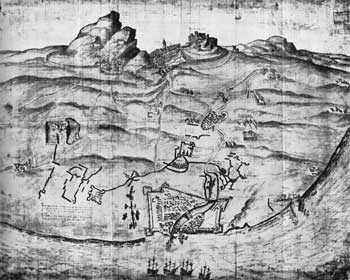
As Mary of Guise’s health deteriorated, she left Leith for the safety of Edinburgh Castle.
Over the following months of bloody struggle, the French fought hard,
But the arrival of the English navy to blockade the port made sure that food and munitions were not reaching the beleaguered troops.
Day after day the siege went on and the French losses mounted.
With little food left there was an imminent threat of starvation.
A 19th century discovery of a disused well full of horse heads is thought to be a direct result of the Siege of Leith and the desperate shortage of food.
The death of Mary of Guise
The death of Mary of Guise brought the bloody Siege of Leith to an end.
After negotiations, the formal Treaty of Edinburgh was signed on 6 July 1560.
With her mother and her young husband dead, Mary Queen of Scots, now unwelcome in France, returned to Scotland. She landed at Leith on a foggy day in August 1561.
although with a heavy heart she was ready to take up her royal duties as Queen of Scotland.
History records the many difficulties Mary had over the following years but in her leisure moments, she took to Leith Links to play golf.
It was on the same Leith Links that the world’s first rules of golf were written nearly two centuries later.
As the English Civil War (1642 – 1651) spilled across the border defences were again strengthened. after
However the Scots squandered a golden opportunity to drive Oliver Cromwell out of the country
Cromwell’s unexpected victory at the Battle of Dunbar ensured that an English army once again overran the Scottish capital.
The Port of Leith quickly became established as the headquarters of Cromwell’s roundhead army in Scotland which stayed until 1659.
The execution of Charles I a decade before had left a void into which Cromwell, as Lord Protector, stepped into.
It was a unique period of Republican government in Britain.
Few Scots openly opposed Cromwell’s Protectorate, most simply lived with it. It was a welcome time of relative peace and stability in Leith and throughout Scotland.
In Scotland, the end of the 17th century was a time of famine and increasing poverty.
Prominent historian Hugh Trevor Roper, commenting on the dreadful social conditions said
“Scotland was, a byword for irredeemable poverty social backwardness and political faction…”
Hugh Trevor Roper
Darien expedition
Desperate for change, much of Scotland believed that a new trading colony to be established on far off Darien (Panama) was the answer to all their troubles.
On the 4th of July 1698, thousands of people lined the docks and other vantage points to wave as the first four ships of the Darien Expedition left the Port of Leith for their voyage to the other side of the world.
The hopes and expectations that accompanied the expedition were subsequently dashed when the venture ended in spectacular failure.
During the latter half of the 18th century, Leith continued to expand.
Port facilities were improved as two new dry docks were built to accommodate ever-increasing traffic. Plans for the first of Leith’s wet docks were to follow within the next 25 years.
Leith docks: further information
Historic Environment Scotland has further information about the history of Leith docks.
The citizens of Leith, had over the centuries, been used to uninvited visitors
But the appearance in 1779, in the Forth Estuary, of a small French squadron, carrying American colours must have caused some alarm to those who saw it.
John Paul Jones
The small flotilla was commanded by John Paul Jones, born in Scotland, but subsequently became one of America’s great heroes of the American Revolution.
Much to the relief of local ship owners, Jones’s ambition to seize their vessels from harbour moorings and then demand a ransom for their return was ruined when a violent gale came to the port’s rescue.
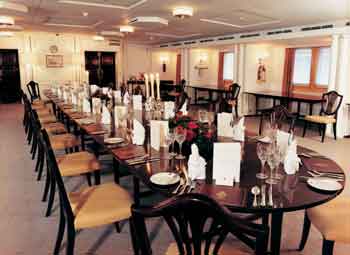
Following their lucky escape, new fortifications, some remnants of which remain today, were added and manned by the Royal Artillery.
Throughout the early 19th century there were a number of signs that the town was modernising.
In 1821, for example, a regular steamship service started from Leith to London.
The following year, King George IV landed at Leith, the first monarch to do so since Charles II.
In the same year, the town’s transport system was improved with the introduction of horse buses.
Four years later Leith shipbuilders built the Sirius which became the first steamship to cross the Atlantic.
As an independent burgh, with its own town council since 1833, Leith found itself being slowly swallowed by an ever-growing Edinburgh.
In 1880, parts of the old and depressing face of Leith were changing as the Leith Improvement Scheme was introduced.
Huge swathes of dereliction and unsanitary slum houses were swept away, allowing a better standard of living for many residents.
US Navy Base Hospital no 3
During World War I, Leith, like many other British ports, was busy with military traffic.
In 1918, as the wounded were brought home, Leith Poor House which had been turned into a British military hospital was transferred to the American navy and became US Navy Base Hospital no 3.
Its American staff, recruited from the California Hospital in Los Angeles, arrived in August 1918.
Leith must have seemed like a different world, but they worked hard to improve conditions in the hospital.
They brought with them new equipment and installed new heating and lighting systems which improved sanitary conditions for the patients.
British battlefield casualties
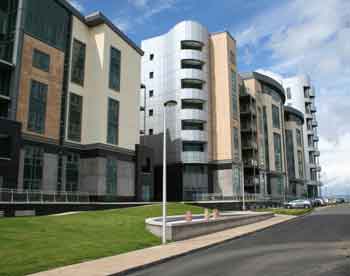
Although it was an American run hospital there was only a small percentage of American patients were admitted. The vast majority of injured were British battlefield casualties.
It was closed at the end of the war in November 1918.
After World War II, Leith docks declined rapidly and the town drifted, becoming synonymous with crime and dereliction.
It seems that limited progress was made in the years after the war to improve people’s lives.
However, the social housing tower blocks built to replace the worst of the slums soon became less than desirable places to live.
Leith becomes part of Edinburgh
Finally in 1920 it became part of Scotland’s capital city. It was a union unpopular with many Leithers.
The government census of 1971 makes interesting yet depressing reading. It gives an insight into the less than ideal living conditions in the town.
It revealed that out of 16,998 occupied houses in Leith, 6157 had no bath, 852 had no internal toilet and 3158 had no piped hot water supply.
Leith looks to the future
Although its contemporary, trendy and expensive apartments, bistros and other tourist attractions have replaced much of the post-war dereliction, there is still work to be done.
Today despite its best efforts Leith is still an amalgam of old and new.
